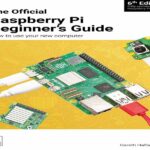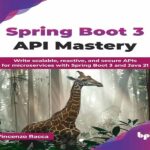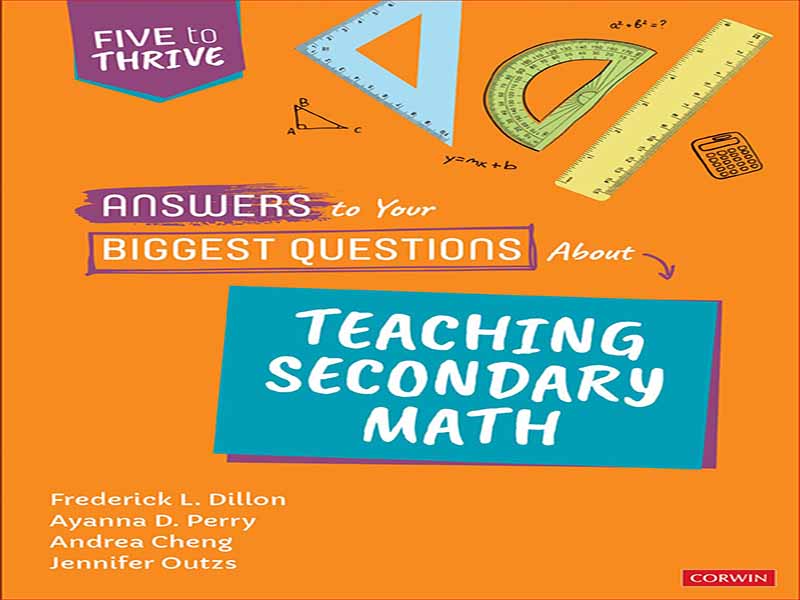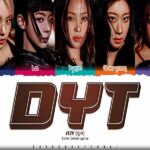- عنوان: Answers to Your Biggest Questions About Teaching Secondary Math Five to Thrive
- نویسنده: Frederick L. Dillon, Ayanna D. Perry
- حوزه: ریاضی متوسطه
- سال انتشار: 2022
- تعداد صفحه: 185
- زبان اصلی انگلیسی
- نوع فایل: pdf
- حجم فایل: 18.62 مگابایت
تدریس سنتی ریاضیات ممکن است به فراگیرانی که در عصر کشاورزی، صنعتی و اطلاعات زندگی میکنند خدمت کرده باشد، زیرا فرصتهای شغلی به افرادی پاداش میدهد که میتوانند به روشهای سیستماتیک فکر کنند و به رویکردهای مجموعهای برای حل مسائل مراجعه کنند. با ورود به عصر مفهومی و استخدام پس از دوره متوسطه به دنبال افرادی بودیم که می توانستند انتقادی فکر کنند، مشکلات را حل کنند و انتقال ایده ها را در محیط های جدید نشان دهند، تغییر کرد (Wathall, 2016). ما اکنون از عصر مفهومی گذشته ایم و کارفرمایان به دنبال کارمندانی هستند که بتوانند انتقادی و خلاقانه فکر کنند، مشکلات را حل کنند، فضاهای مشکل را توصیف کنند و ایده ها را به تنظیمات جدید منتقل کنند و الگوها و ساختارهایی را تشخیص دهند که تنظیمات جدید را برای حمایت از انتقال کارآمدتر تعریف می کنند. و حس سازی آموزش مفهومی میتواند دانشآموزان را در تعامل خلاقانه خارج از مدرسه حمایت کند، زیرا مفاهیم، بنا به تعریف، «سازههای ذهنی هستند که بیزمان، جهانی و قابل انتقال در طول زمان یا موقعیتها هستند» (Wathall, 2016, p. 6). پاسخ به مسائل ریاضی که می توان با وارد کردن مسائل به فناوری محاسباتی یافت، به تفکر خلاق دانش آموز کمک نمی کند. در حالی که یادگیری حقایق و رویههای ریاضی جایگاه خود را دارد، دانشآموزان باید ریاضی را به شیوههایی آموزش دهند که از آنها در درک چگونگی پیوند مفاهیم، حقایق و رویهها پشتیبانی کند تا بتوانند این دانش را حفظ کنند و طرحواره پیچیدهتری از ریاضیات بسازند.
Traditional mathematics teaching may have served learners living in the Agricultural, Industrial, and Information Ages, because employment opportunities rewarded people who could think in systematic ways and refer to set approaches to solving problems. That changed as we entered the Conceptual Age and postsecondary employment sought out people who could think critically, solve problems, and demonstrate the transfer of ideas in new settings (Wathall, 2016). We’ve now progressed past the Conceptual Age, and employers are looking for employees who can think critically and creatively, solve problems, describe problem spaces and transfer ideas to new settings and recognize patterns and structures that define the new settings to support more efficient transfer and sensemaking. Teaching conceptually can support students in engaging creatively outside of school because concepts, by definition, are “mental constructs, which are timeless, universal, and transferable across time or situations” (Wathall, 2016, p. 6). Answers to mathematics problems that can be found by entering problems into computational technology do not contribute to creative student thinking. While learning mathematics facts and procedures has its place, students need to be taught math in ways that support them in understanding how concepts, facts, and procedures are connected so they can retain this knowledge and build a more complex schema of mathematics.
این کتاب را میتوانید بصورت رایگان از لینک زیر دانلود نمایید.
Download: Answers to Your Biggest Questions About Teaching Secondary Math Five to Thrive




































نظرات کاربران